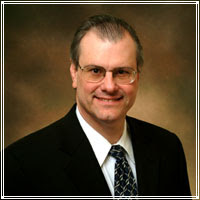
The Associated Press reports:
HARRISBURG, Pa. — Authorities in Pennsylvania say a gas station patron died when static electricity ignited a fire as he filled up his tank.
Authorities say 19-year-old L. David Byers of central Pennsylvania died early Friday at the gas station in Camp Hill.
A gas station equipment expert says the only other fatality from a static-generated fire was in Oklahoma more than a decade ago.
Petroleum Equipment Institute Executive Vice President Robert Renkes says such fires require a pump without a vapor recovery device and a motorist who generates static electricity during fueling.
Renkes says static is usually discharged safely several ways before a motorist begins fueling up.
Of refueling fires reported, approximately 50% of the cases involved a person getting back into the vehicle while gas was still flowing into the tank. When the consumer returns to the fill area and touches the nozzle to complete the fillup, a static spark can ignite the fumes which can cause a flash fire.
The following is a video of a fire caused by static electricity while filling a container:
The following is another video of a fire caused by static electricity at the pump:
The following are a few suggestions to avoid or minimize the risk of a static electical discharge and fire:
1. ALWAYS turn off the engine before refueling;
2. Before reaching for the nozzle to the gas pump, make sure that the car door has been fully closed and then touch with your hand either the metal roof or metal side door to insure that you are properly grounded;
3. Stay near the vehicle fueling point during the process;
4. Do not get back into your vehicle during refueling even when using the nozzle's automatic hold-open latch. If you must re-enter your vehicle, discharge again the static electricity buildup when you get out by touching the outside metal portion of your vehicle away from the filling point before attempting to touch the nozzle;
5. Avoid gas spills; do not overflow or top off the tank. The fuel dispenser will shut off automatically when the tank is full.
6. If you are filling a container, make sure that you use an approved container. Never fill the container inside a vehicle, in the trunk or on the bed of a pickup or flatbed truck or floor of a trailer. The bed of the truck and/or bed liner act as an insulator as does the carpeting in a vehicle or its trunk which allow static electricity to build up in the container while its being filled.
7. Unlike the video noted above, if a fire commences, leave the pump nozzle in vehicle and walk away from the pump. Notify the station attendant and/or hit the emergency shut off value to shut off the pump. The manuever in the video is an unsafe demonstration of what to do if a fire erupts. The flames could have engulfed the driver when the driver removed the nozzle from the vehicle.
_________________________________________
CONTACT INFORMATION: If you or a family member have been injured or damaged due to the fault or responsibility of someone else, an industrial accident or by a dangerous or defective product, drug or toxic substance, contact Alan Morton for a no obligation, free consultation.
For additional information contact:
Alan L. Morton
MORTON LAW OFFICES, CHARTERED
1005 North Eighth Street
Post Office Box 420
Boise, ID 83701-0420
Telephone: 208.344.5555
Toll Free: 866.946.1669 [866.WIN.1.NOW]
Facsimile: 208.342.2509
Email: amorton@mortonlawyers.com
Website: www.mortonlawyers.com

No comments:
Post a Comment